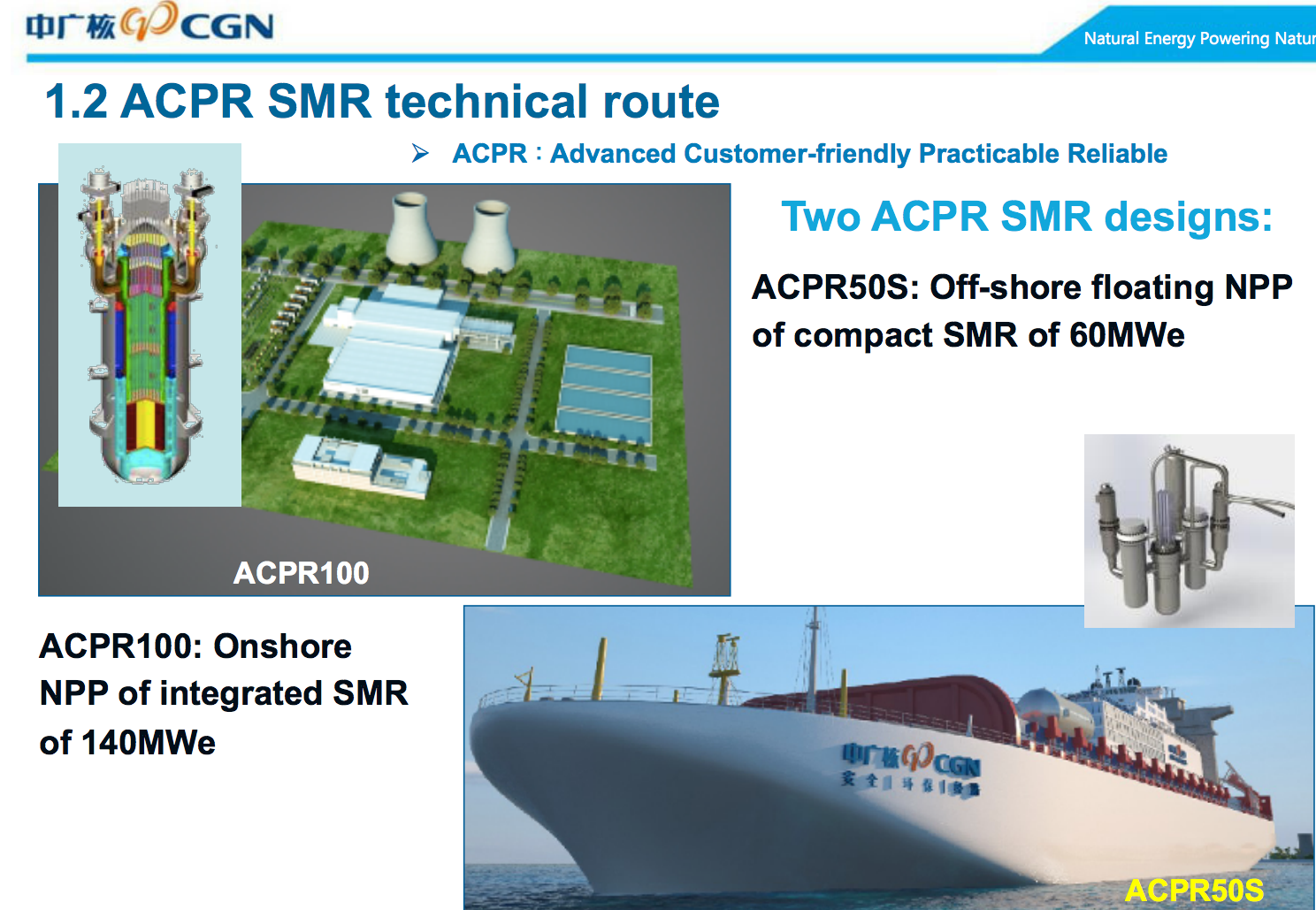The platforms have two modes – floating and submersible, and the first will be commissioned before 2020.
The platforms will focus on solving power supply issues in the Xisha Islands and other islands in the South China Sea where infrastructure construction is underway.
The nuclear reactor-related technology, when successfully reduced in size, could be later applied to the country’s military vessels, including nuclear-powered aircraft carriers or next generation nuclear submarines.
The first floating ACPR50S nuclear reactor to enter service in 2020, with a thermal output of 200 megawatts and electrical output of 60 megawatts.

CNNC signed a 2015 agreement with Lloyd’s Register for regulatory support in developing a sea-based, 100-megawatt version of its ACP100 reactor, which is likely the joint venture’s intended launch project.



Analysis shows that the economics of ACPR50S floating Nuclear power plant for offshore sea oilfield production is much better than diesel power generation system and gas turbine power generation system.






ACP100 got construction approval in 2017
China’s first project to feature the third-generation ACP100 nuclear reactor, called the Linglong One, has completed its preliminary design stage and is expected to be built later in 2017 in the Changjiang Li Autonomous County of Hainan. The first concrete for the ACP100 will be on 30th Dec. 2017.
Mass production and global exportation of the small modular reactors following the pilot project are expected, Qian said. Countries such as Canada, Brazil, Egypt, Indonesia, Iran, Mongolia, Pakistan, Saudi Arabia, the United Kingdom, to name a few, have all shown interest on the technology.




Brian Wang is a Futurist Thought Leader and a popular Science blogger with 1 million readers per month. His blog Nextbigfuture.com is ranked #1 Science News Blog. It covers many disruptive technology and trends including Space, Robotics, Artificial Intelligence, Medicine, Anti-aging Biotechnology, and Nanotechnology.
Known for identifying cutting edge technologies, he is currently a Co-Founder of a startup and fundraiser for high potential early-stage companies. He is the Head of Research for Allocations for deep technology investments and an Angel Investor at Space Angels.
A frequent speaker at corporations, he has been a TEDx speaker, a Singularity University speaker and guest at numerous interviews for radio and podcasts. He is open to public speaking and advising engagements.


Way to go China! We are jealous here in USA.
There must be the perception at CCNC that placing the reactor coolant pumps at a high elevation, in a pipe-within-a-pipe suction/discharge configuration on the hot leg (cold leg is typical), is a compromise that will help them “keep the core covered” in a Loss Of Coolant Accident (LOCA) thus improving their Core Damage Frequency (CDF). This was the perception at B&W mPower, where management made the edict that there would be no penetrations in the lower head of the Reactor Pressure Vessel (RPV). Following this edict, much design effort was spent routing in-core instrumentation through impossible jug-handle bends while its ABWR-style reactor coolant pumps were mounted at a high elevation and on the hot-leg where they complicated the function of the passive blow-down and refill Emergency Core Cooling System (ECCS) concept. While the ACPR100 pipe-within-a-pipe reactor coolant pump configuration is a proven design (Otto Hahn mid-1960s) and there is likely more than 400 psi of NPSH assuming typical PWR outlet temperature and pressure, I struggle to understand why the Chinese designers avoid mounting the pumps to the bottom of the RPV through penetrations that are sealed by bolted flanges or welds, as is the precedent established by the currently operating ABWR. The advertised CDF of the ABWR, which has approximately 200 major penetrations for control rods and pumps through the bottom head of the RPV, is 1.7E-8/year. Although PWR technology is commonly thought to be safer than BWR technology, the advertised CDF of the AP-1000 is 5.1E-7/year. As a person intimately aware of SMR design challenges, I believe that CNNC should move the reactor coolant pumps to the lower head of the RPV adopting the proven ABWR scheme where the case of the wet induction motor is welded to the RPV. This will simplify the design and be less of an obstruction to ECCS function. Best of luck to them.